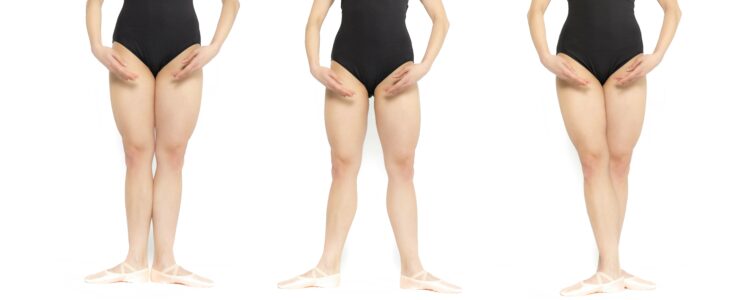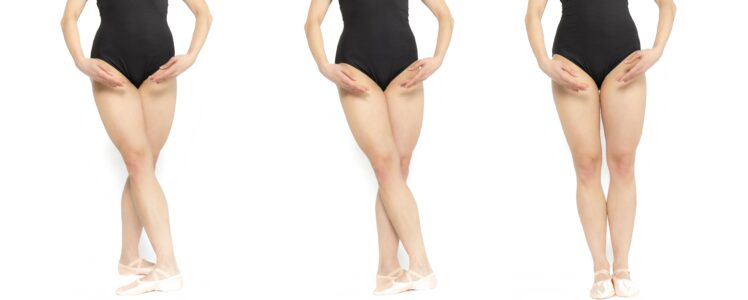
21 Feb Positions of the feet
There are 6 positions in ballet. Every exercise starts and finishes in one of them so it’s important that you know them well!
First, second and third position on the feet Fourth, fifth and sixth position on the feet
First position: With an outward rotation from the hips, the heels are touching and the toes are facing outwards. The amount of natural rotation in your hip socket and your control of this turnout will affect the look of your first position – this can range from the feet forming a ‘V’ shape to the feet being in a flat line. Never force the first position by trying to turn out too much. You need to feel stable and comfortable.
Second position: In second position, the feet are as wide apart as the shoulders, with the legs once again being outwardly rotated from the hips. The feet should match each other – be careful that you don’t have one foot further forward than the other or one foot more turned out than the other.
Third Position: The third position is rarely used in professional classical ballet but can be used during training if you don’t feel comfortable with fifth. With both legs rotating from the hips, the heel of the front foot meets the middle of the back foot. The turnout on both feet should be equal. Third position can be taken with either the right leg or left leg in front.
Fourth Position: Feet in the fourth have the space of approximately one-foot length between them. The fourth crossed (sometimes known as ‘fourth opposite fifth’) is where the heel of the front foot is opposite the big toe joint of the back foot. It is opposite where that foot would be if it were in fifth position. Turnout for both of these positions comes from the hip. The feet should be turned out in equal amounts. The weight is divided by both feet that each carry 50 percent of the weight. Fourth position can be taken with either the right or the left leg front.
Fifth Position: The hips are rotated outwards, knees looking out. In the perfect fifth positions the toes are standing against the heels and the heels against the toes.
Sixth Position: The feet are together in parallel.
Please note that excessive turnout is not necessary if you are just starting ballet. Your turnout and flexibility evolve and depend on natural turnout and flexibility. You can improve your turnout by doing stretching exercises. You should never feel pain in the knees or ankles. If you feel unstable or uncomfortable, turn your legs a bit more into a V shape.


Sorry, the comment form is closed at this time.